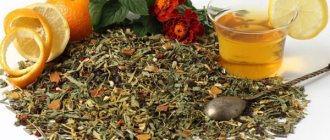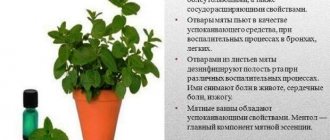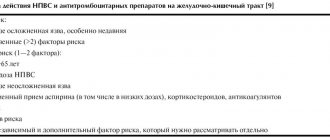Compound
| Elixir | 100 ml |
| active substances: | |
| licorice extract thick | 20.7 g |
| (with glycyrrhizic acid content 14%) | |
| anise oil | 0.34 g |
| ammonia solution concentrated 25% | 1.38 g |
| (equivalent to 0.345 g of ammonia) | |
| excipients: ethyl alcohol (ethanol) 90% - 20.41 ml; purified water - up to 100 ml |
Side effects and overdose
Adverse negative reactions of the body while taking breast milk may manifest as allergic skin reactions. They may be accompanied by itching and redness. Sometimes angioedema can occur, and very rarely anaphylactic shock.
On the part of the gastrointestinal tract, in case of individual intolerance to any components in the composition of the herbal remedy, dyspepsia may be observed. These are, in particular, nausea, vomiting, diarrhea, disruptions in the digestive process, increased gas formation, and abdominal pain.
Additionally, headache, severe weakness and drowsiness may occur. Against the background of a general deterioration in the body’s condition, apathy develops and a syndrome of causeless internal anxiety occurs, which causes general discomfort and worsens the quality of life.
If any negative reactions of the body occur, you should stop taking the herbal mixture and consult with your doctor in order to change the treatment regimen. An overdose of the finished infusion has not been recorded in practice. But theoretically, when taking a large amount of the finished product, one can expect an increase in the listed negative reactions of the body.
Pharmacodynamics
The expectorant effect of the breast elixir is due to the action of its constituent components:
— thick licorice extract has anti-inflammatory and expectorant properties, which are associated with the content of glycyrrhizin, which stimulates the activity of the ciliated epithelium in the trachea and bronchi, and also enhances the secretory function of the mucous membranes of the upper respiratory tract;
— anise oil has an expectorant effect due to the content of anethole in the oil, which promotes reflex stimulation of breathing, increased activity of the ciliated epithelium of the respiratory tract and increased secretion by the mucous membrane of the larynx, trachea and bronchi;
- ammonia has an irritating effect, which leads to excitation of the endings of sensory nerves in the upper respiratory tract and reflex stimulation of the respiratory center.
Collection option No. 3
Breast collection No. 3 is made from medicinal plants that are used in the field of alternative therapy. Components of this breast collection:
- Anise. A plant that is used not only as a spice: its infusion promotes expectoration of sputum and prevents the development of pathogenic bacteria;
- Pine buds. Act as a disinfectant, killing pathogenic microbes, and thereby preventing inflammatory processes;
- Sage. The herb eliminates swelling of the throat, which is equally common with wet and dry coughs, and has a sedative effect on the affected areas of the respiratory tract;
- Marshmallow root. Promotes an increase in sputum and accelerates the expectoration process.
Contraindications to the use of breast milk No. 3: allergy to the herbs included in its composition. Also, it should not be drunk by pregnant women, since pregnant women are prohibited from taking medications and preparations containing anise.
In what cases should it be used?
Herbal mixture No. 3 for cough can be prescribed by a general practitioner for acute respiratory viral infections, influenza, lung diseases (for example, pneumonia) and other respiratory ailments.
The use of this medicinal and herbal preparation is equally effective for wet and dry cough.
How to use
To get rid of the disease as quickly as possible, strictly follow the instructions for preparing the drug before using it:
- 2 tbsp. Place the mixture of chopped herbs in a metal bowl and pour 1 tbsp. hot liquid;
- Boil the liquid over low heat for 15 minutes, then let cool;
- Separate the herb from the infusion using a gauze bandage.
The infusion must be stored in a cool place (can be in the refrigerator), and warmed up before use. It is recommended to consume at least 3 times a day in half a glass portions. The standard course of therapy is 3 weeks.
special instructions
The drug contains 90% ethyl alcohol. The content of absolute ethyl alcohol in one drop of the drug is 0.0075 g, in the maximum single dose for adults - up to 0.3 g, in the maximum daily dose - up to 1.2 g.
Impact on the ability to drive vehicles and engage in other potentially hazardous activities. During the treatment period, care must be taken when driving vehicles and engaging in other potentially hazardous activities that require increased concentration and speed of psychomotor reactions.
Indications and contraindications
In order to take breast milk 4 correctly, you should know which coughs it helps with. The product belongs to herbal preparations with properties. This means that it is prescribed for the treatment of bronchitis and tracheitis, when difficulties arise with the removal of sputum.
A herbal remedy is prescribed, the instructions for use confirm this, for bronchial asthma. Thanks to it, it is possible to stabilize the condition of patients and reduce the risk of seizures. The cause of chronic disease is often heredity. Other factors can also provoke the development of bronchial asthma, for example:
- Harmful working conditions.
- Bad ecology.
- Unbalanced and poor quality nutrition.
- Exposure to chemicals.
Do not use the herbal remedy if you are hypersensitive to the components of the collection. Other contraindications:
- Kidney failure.
- Liver failure.
With caution, under the supervision of a doctor, it is necessary to use a herbal remedy if patients are diagnosed with active diseases caused by tubercle bacilli, fungal, viral and bacterial pathogens. This approach is also necessary in the treatment of decompensated liver cirrhosis and respiratory pathologies.
The drug is not prescribed for the treatment of respiratory tract diseases in children under 3 years of age. It is not recommended to use breast collection 4 during pregnancy and lactation without prior consultation with your doctor. This requirement is explained by the lack of data on the effect of the complex drug on the fetus and newborn child.
Breast collection No. 4, instructions for use: method and dosage
Breast collection No. 4 for cough is taken orally, before meals, in the form of an infusion of crushed raw materials or a powder collection.
To prepare an infusion from crushed raw materials, place 2 tablespoons (about 9 g) of the dry collection in an enamel container and pour one glass (200 ml) of boiling water, cover with a lid and heat in a water bath for 15 minutes; then cool for 45 minutes at room temperature, place on a sieve or cheesecloth, strain and squeeze out the remaining raw materials. The volume of the finished infusion is adjusted to 200 ml (by adding boiled water).
To prepare an aqueous infusion from the powder collection, place 1–2 filter bags (1.5–4 g) in an enamel or glass container, pour half a glass (100 ml) of hot boiled water, cover with a lid and leave to infuse for 15 minutes, periodically pressing on the bags with a spoon. Then the bags are squeezed out and the volume of the infusion is adjusted to 100 ml.
The infusion of Breast Collection No. 4 is taken warm, after shaking. Children over 12 years of age and adults are prescribed half a glass 3-4 times a day. The duration of treatment is from 2 to 3 weeks.
Reviews about Breast collection No. 4
According to reviews, Chest Collection No. 4 helps with coughs, improves sputum discharge, and has an anti-inflammatory effect. Side effects are very rare. The drug is completely natural and does not contain artificial colors, flavors or preservatives. Filter bags are easy to brew and drink. The product is inexpensive and accessible.
Among the disadvantages, patients most often note the specific taste of the infusion, which many do not like. The drug is not suitable for allergy sufferers, as it can cause allergic reactions. With severe cough, the effect of treatment is not always noticeable.
Release form and composition
Breast collection No. 4 is available in the following forms:
- crushed raw material: a yellowish-green mixture of heterogeneous pieces of plant material interspersed with reddish-brown, dark green, creamy-white, bluish-violet, yellow-orange, grayish-brown, grayish-green and yellowish-gray, passing through holes diameter 7 mm; the aqueous extract has a bitter-sweet taste, slightly cooling (30, 50, 75 or 100 g in cardboard packs with an inner bag, instructions for use are applied to the pack or placed inside the cardboard pack);
- powder collection: a reddish-yellow mixture of heterogeneous pieces of plant material interspersed with white, brown, green and yellowish-orange color, passing through holes with a diameter of 2 mm; the aqueous extract has a bitter-sweet taste, slightly cooling (1.5 g or 2 g in filter bags made of heat-sealed filter paper, in a cardboard pack of 10, 20, 24, 30 or 50 filter bags, instructions for use of Breast Collection No. 4 is applied to the pack or placed inside a cardboard box).
Composition of Breast Collection No. 4:
- marsh rosemary shoots – 20%;
- chamomile flowers – 20%;
- violet herb – 20%;
- calendula flowers – 20%;
- peppermint leaves – 15%;
- licorice roots – 15%.
Pharmacological properties
Chest collection No. 4 is a combined herbal remedy with bronchodilator, general tonic, expectorant and anti-inflammatory effects, most often used for coughs.
The effect of the drug is due to the following biologically active substances contained in the herbal ingredients of the collection:
- shoots of wild rosemary: poisonous essential oil - from 1.5 to 7% (including bicyclic alcohol, palustrol, iceol, η-cymene, geranyl acetate, hydrocarbons), which has a bitter-burning taste and a specific balsamic aroma, andromedotoxin, glycosides (arbutin, ericolin ), coumarins (esculetin, scopoletin, esculin, umbelliferone, etc.), tannins, flavonoids (quercetin, hyperoside), phytoncides, vitamin C (ascorbic acid), micro- and macroelements, coloring matter;
- chamomile flowers: essential oil - 0.2–0.8% (including the main biologically active substance - chamazulene, its precursor, prochamazulene, other monoterpenes and sesquiterpenes), flavonoids (including derivatives of apigenin, quercetin, kaempferol, luteolin, isorhamnetin), coumarins , sesquiterpene lactones (matricin and matricarin), phenolcarboxylic acids, phytosterols, choline, organic acids (salicylic, isovaleric, caprylic), carotene, vitamin C, mucus, gums, bitterness, macro- and microelements, polyacetylenes;
- violet herb: alkaloid violaemitin, coumarins, saponins, tannins, flavonoids (violatin, violquercitrin, vitexin, rutin, orientin, etc.), polysaccharides, anthocyanins and leukoanthocyanins, mucus, acids (tartaric, ursolic, salicylic), carotenoids, vitamin C , macroelements (calcium, potassium, iron, magnesium), microelements (aluminum, copper, zinc, manganese, cobalt, molybdenum, barium, nickel, selenium, strontium, lead); has the ability to accumulate zinc, iron, molybdenum, selenium, barium;
- calendula flowers: carotenoids - up to 3% (including carotene, violaxanthin, lycopene, rubixanthin, citroxanthin, flavochrome, flavoxanthin, etc., 15 compounds in total), paraffin hydrocarbons (gentriacontane, sitosterol), triterpene glycosides, resins, mucus and bitterness, organic acids (salicylic, malic), vitamin C, triterpene saponins (glycosides of oleanolic acid, called calendulosides A, B, C, D, E, F, G, H), flavonoids (isoquercitrin, rhamnetin, isorhamnetin-3-glucoside, and etc.), alcohols - up to 5%, polysaccharide (containing arabinose, galactose, glucose, rhamnose and xylose), coumarins in small quantities (scopoletin, esculetin, umbelliferone), resinous and tannins - up to 3.44%, traces of alkaloids, trace elements, sterols;
- peppermint leaves: essential oil, the main component of which is menthol (from 40 to 70%) and its esters, the oil also contains limonene, β-pinene, cineole, pulegone, dipentene, and other terpenoids - up to 3%; tannins, organic acids, flavonoids, betaine, carotene, hesperidin, acids (ursolic - 0.3% and oleanolic - 0.12%), macro- and microelements, other chemical nutrients;
- licorice roots: saponin glycyrrhizin (about 23%), bitter substances (about 4%), resinous substances - 3–4%, vitamins, proteins and lipids - up to 4%, essential oil (in trace amounts), monosaccharides and disaccharides - up to 20%, polysaccharides (pectin and starch) – 4–6%, flavonoids – 3–4%.






